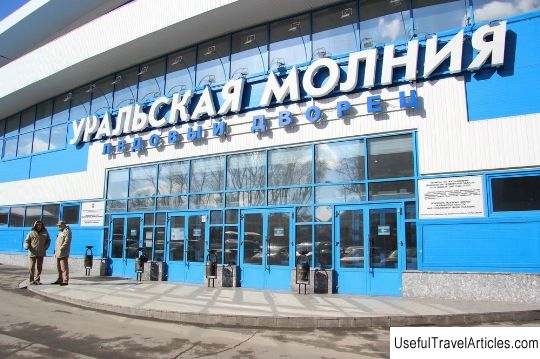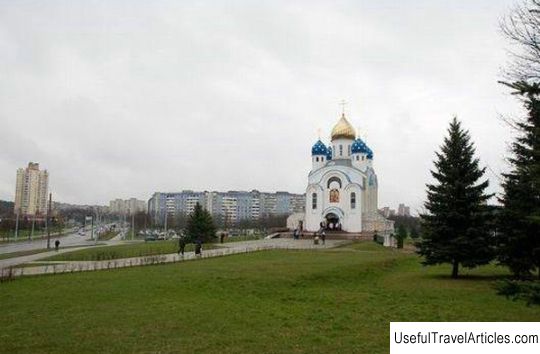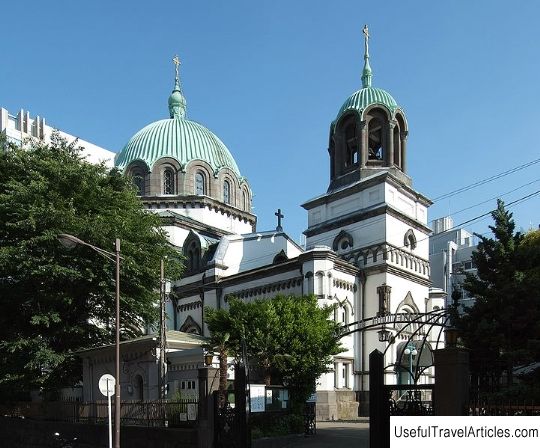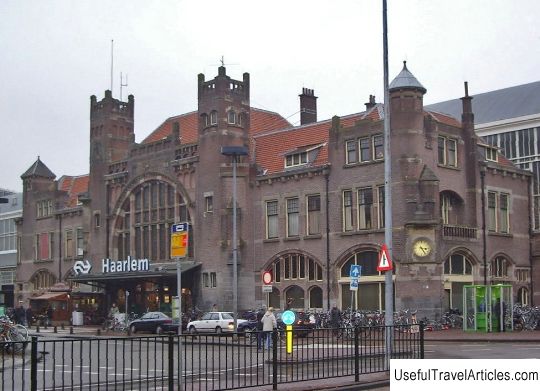Church of the Resurrection of Christ at Varshavsky railway station description and photos - Russia - St. Petersburg: St. Petersburg
Rating: 7,9/10 (1700 votes) 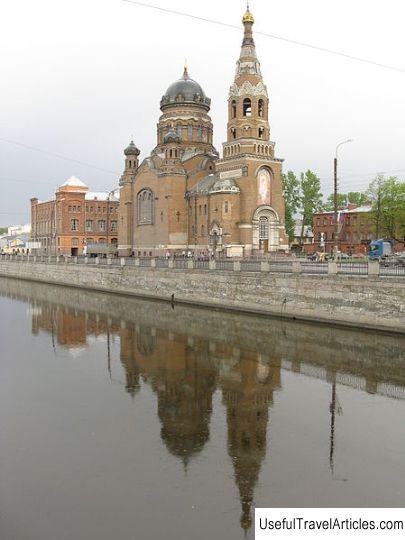
Church of the Resurrection of Christ at Varshavsky railway station description and photos - Russia - St. Petersburg: St. Petersburg. Detailed information about the attraction. Description, photos and a map showing the nearest significant objects. Photo and descriptionThe Church of the Resurrection of Christ at the Varshavsky railway station (the Resurrection Church of the All-Russian Alexander Nevsky Brotherhood of Sobriety) is an active church in St. Petersburg. It stands on the embankment of the Obvodny Canal, near the Varshavsky railway station. The first building of the church was laid on this place in mid-August 1894 to commemorate the marriage of Their Majesties by members of the Society for the dissemination of religious and moral education. This temple was a transferred wooden church from Nikolaevskaya Street. It was assembled under the direction of S.P. and V.P. Kondratyev. In early December 1894, the temple was consecrated. In 1896-1897, a three-storey building was built nearby, in which a library-reading room and a school were arranged. The architect was G.G. background Goli. In 1897, the II priest Alexander Rozhdestvensky appeared in the church, who in August 1898 opened the Alexander Nevsky Sobriety Society at the church, which soon became numerous. Several branches appeared in the northern capital. In 1914, it was transformed into the All-Russian Alexander Nevsky Brotherhood of Temperance. With the foundation of the Society, fundraising for the construction of a new church from stone began. The construction of the temple became the work of the life of the famous St. Petersburg donor for the construction of churches D.L. Parfyonov. The work took place in conditions of state turmoil and war with a lot of difficulties. But the construction was completed on time. Struck by the success of the merchant Parfyonov, the Sovereign granted him, bypassing intermediate ranks, the rank of general. The new church was built according to the project of the academician of architecture G.D. Grimm together with architects G.G. von Goli and A.L. Hunna. It was laid down at the end of July 1904, and a year later, construction work was almost completed. The temple was faced with decorative bricks and finished with sandstone. The church building could accommodate up to 4000 people. In 1906, a 1000-pound bell was raised on the tent-roofed bell tower, the height of which is 60 m. It was named "Father Alexander" in honor of the deceased founder of the Society - priest Alexander Vasilyevich Rozhdestvensky. In 1908 the main chapel was consecrated. A few days later, the right side-altar was consecrated in the name of St. Nicholas, and the left - in honor of the noble Prince Alexander Nevsky. The central iconostasis was designed by A.L. Hunna. The outdoor icon "The Resurrection of Christ" was painted in 1909 by the artist S.T. Silkov. In 1913-1914, the exterior decoration of the temple was completed. In the next two years, the creation of an internal oil painting was organized. The artist was Professor V.T. Perminov. The basis for it was the cardboard used to create the mosaics of the Church of the Savior on Spilled Blood. In 1930, the Resurrection Church was closed. Here were the services of the tram fleet. Until the closure of the Resurrection Church, the icon of the Resurrection of Christ was especially revered, which was donated by Damian, the Patriarch of Jerusalem. It contained a particle of the Life-Giving Coffin. Also venerated were the icon of the Resurrection of Christ, created on the board of the Mamre oak and donated in Jerusalem by the Russian Spiritual Mission, and the icon of St. Seraphim of Sarov, which was brought from Sarov. In the summer of 1989, the temple was returned to the believers, and the first divine service was held here on Easter 1990. The interior of the temple, the dome and the bell tower have not yet been fully restored. In December 2008, a new cross was installed on the main dome. Work is expected to repair the dome. In addition, the iconostasis is to be made and the clearing of the murals and interior decoration continue.         We also recommend reading Faizabad Khanaka description and photos - Uzbekistan: Bukhara Topic: Church of the Resurrection of Christ at Varshavsky railway station description and photos - Russia - St. Petersburg: St. Petersburg. |
